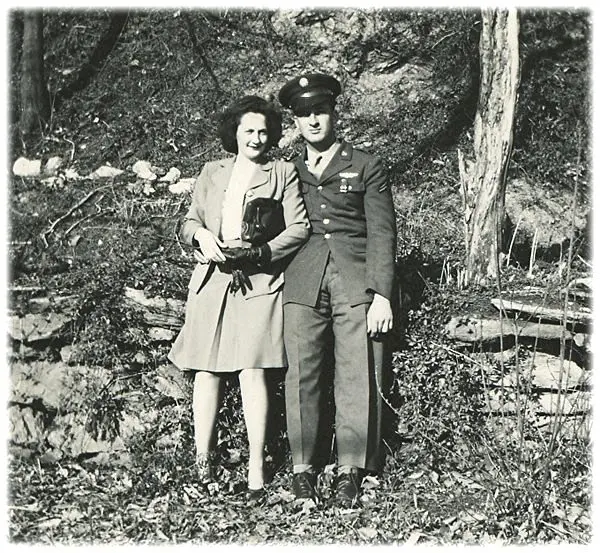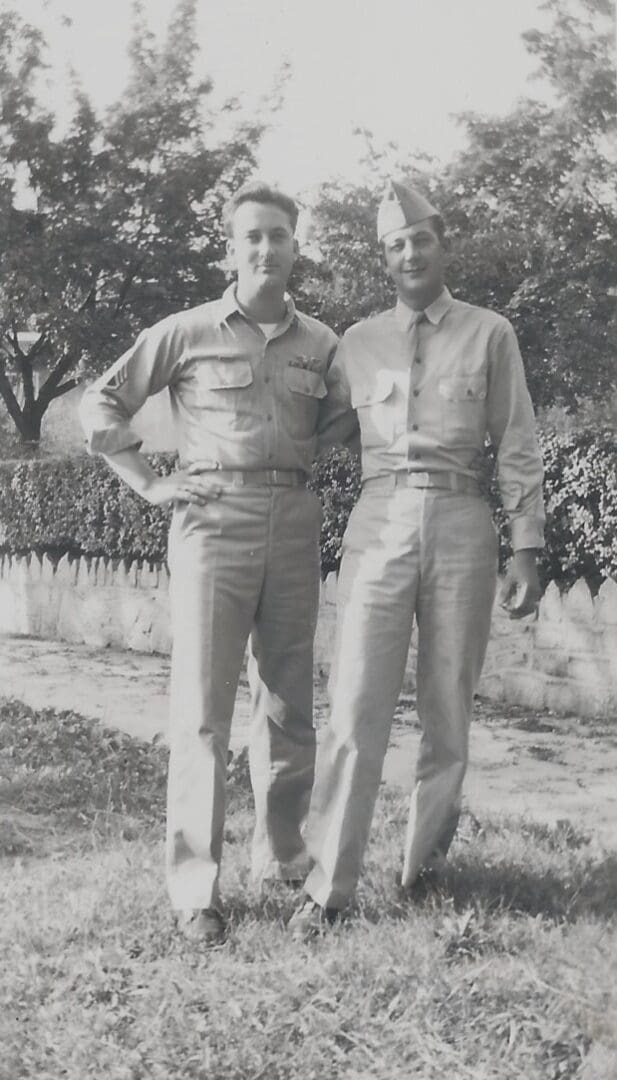
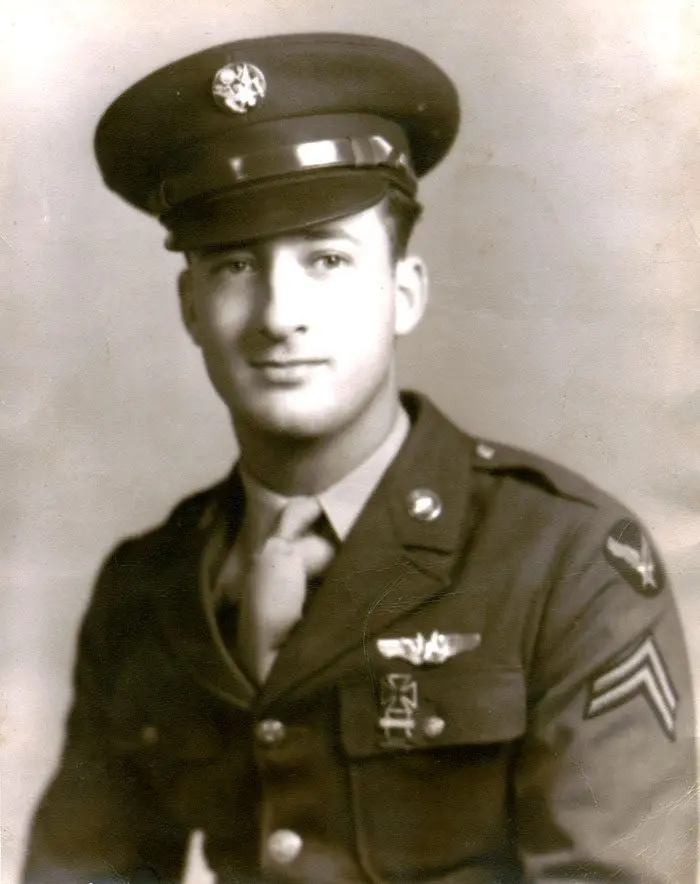
Louis Lee Oddenino, born the 12th of October 1920 in Aroda, Virginia, great-grandson of Joseph Oddenino, was named after his paternal grandfather, Francis Lawrence Louis Oddenino, and his maternal grandfather, Shelton Lee Bazzle:
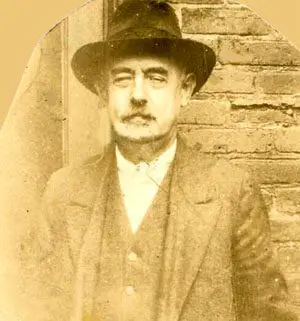
Grampa Louis Oddenino
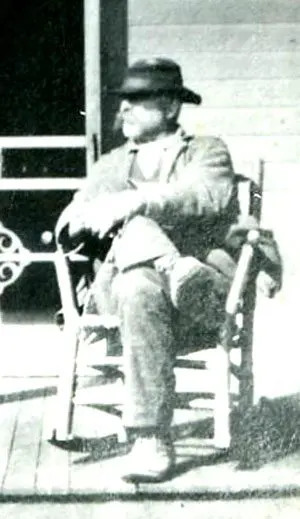
Shelton Lee Bazzle
Louis graduated from Madison High School in Madison County, Virginia, after which he moved to Washington, D.C., where he lived with his grandfather and namesake, Frances Lawrence Louis Oddenino.
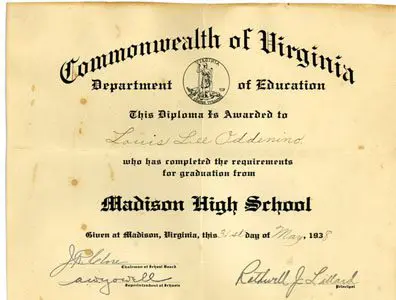
Here is Louis in Aroda, Virginia, in September 1936 with the family car:
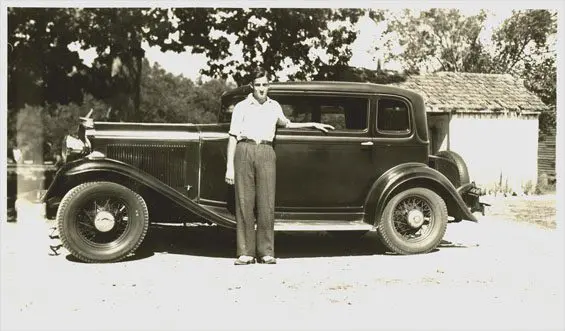
During World War II, Louis joined the Army Air Corps, where he received flight training and was ultimately sent to Corsica as a turret gunner. Here are his original dog tags:
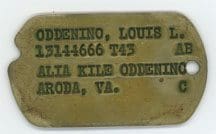
Here is Gabby Oddenino, Louis' granddaughter, wearing the same World War II army coat worn by Louis during the War:
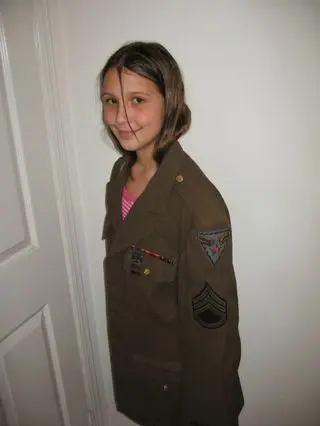
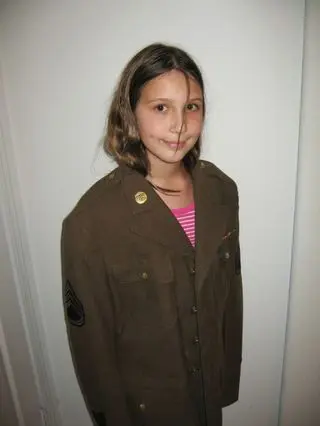
Here are photos of Louis in 1943 while in training in Lincoln, Nebraska:
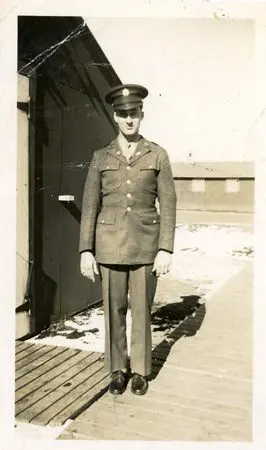
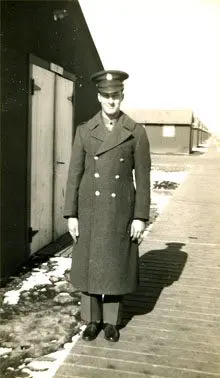
We can obtain an idea of what it was like at the Army Air Base in Lincoln, Nebrask during World War II through the training booklet issued to the soldiers there. We have a copy of one which Louis to his sweetheart, Louise, with his loving comments on the last page.
To view this World War II booklet, click here.
|
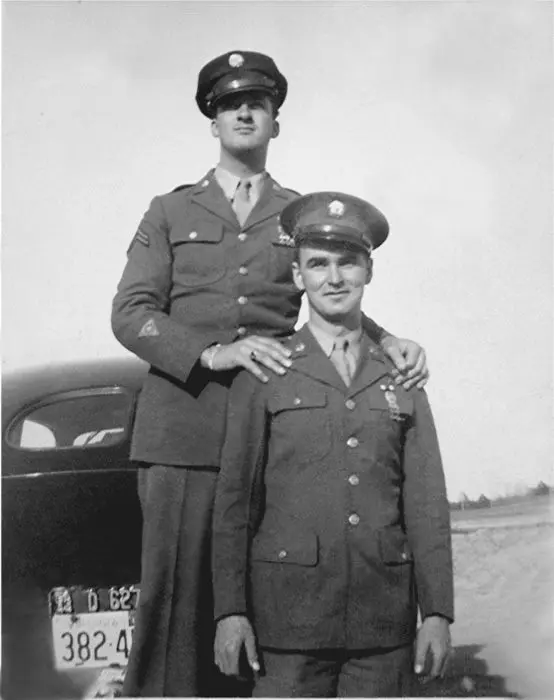
Louis and his bride-to-be, Louise Cash, in March 1944 in Washington, D.C.
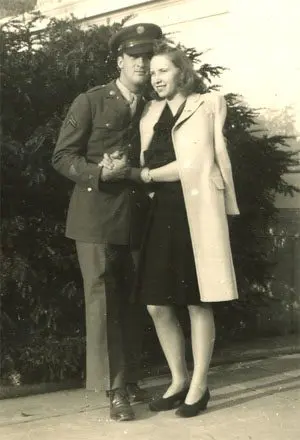
While in the service and before going overseas, he married Louise Ellen Cash, also of Aroda, Madison County, Virginia, on June 7, 1944 in Greenville, South Carolina.

A postcard booklet the happy couple obtained while in Greenville, South Carolina in 1944:
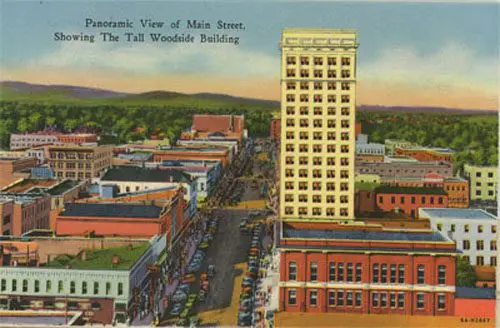
| The Greenville, South Carolina Army Air Base trained bomber crews for the B-25 during World War II. To read more about the Greenville Army Air Base, click here.
Historical Timeline for Greenville Army Air Base:
|
For images of the Greenville Army Base, click here
Before being shipped overseas, Louis was stationed at times in Nebraska, North Dakota, Nevada, Georgia, Florida and California.
During a Florida training break, Louis and a friend posed for this photo in 1944:
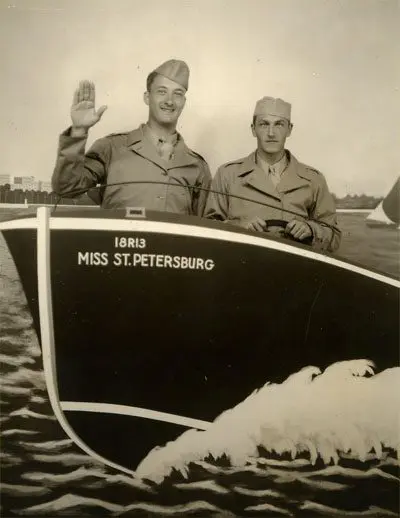
Training for combat involved studying manuals on how to fight in the air. Here are some pages from a manual used by Louis in his training:
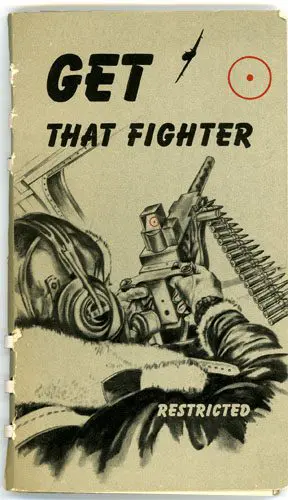
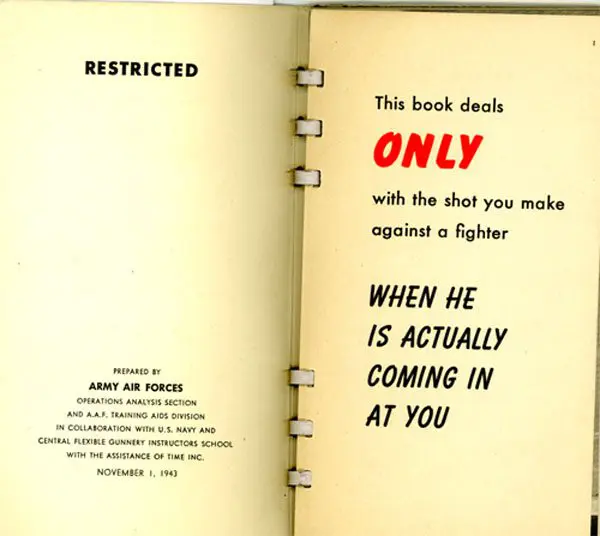
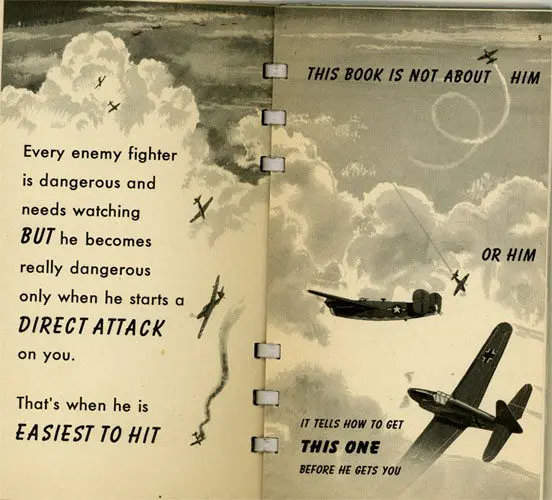
Click here to see more of this Training Manual
Click here to see the World War II Flight Manual
While training in Santa Ana, Califorinia, Louis received the booklet below on winning the war:
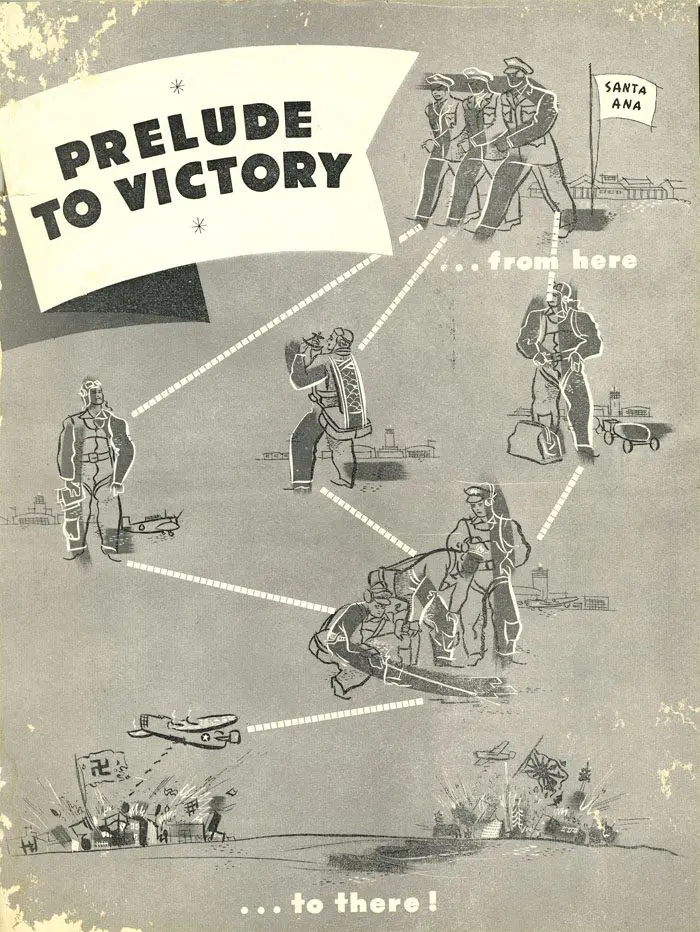
Click here to view all the pages of this booklet.
While he was away, his wife Louise saved various articles that were written about him, mainly in the Madison County Eagle Here is one written while Louis was in Nebraska:
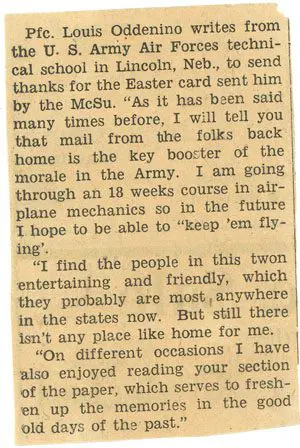
A promotion made the news back home:
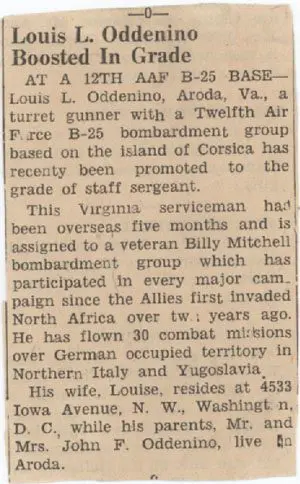
| Louis sent his wife a postcard while in Georgia before going overseas: |
|---|
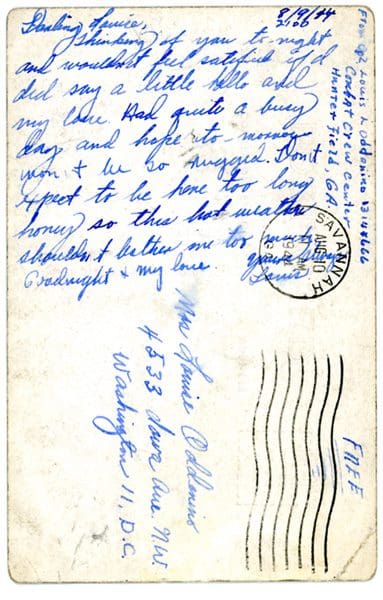
|
|---|
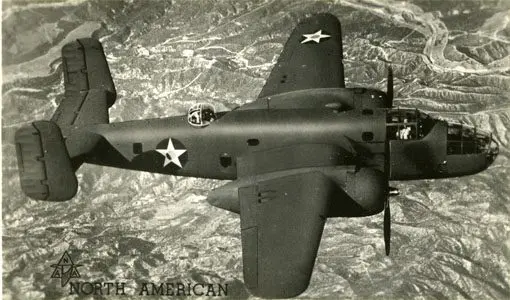
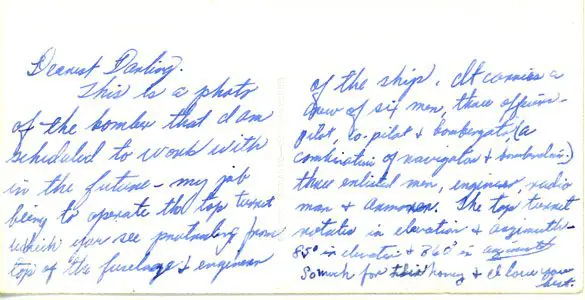
Not long after beginning his bombing missions, Louis received an Air Medal:
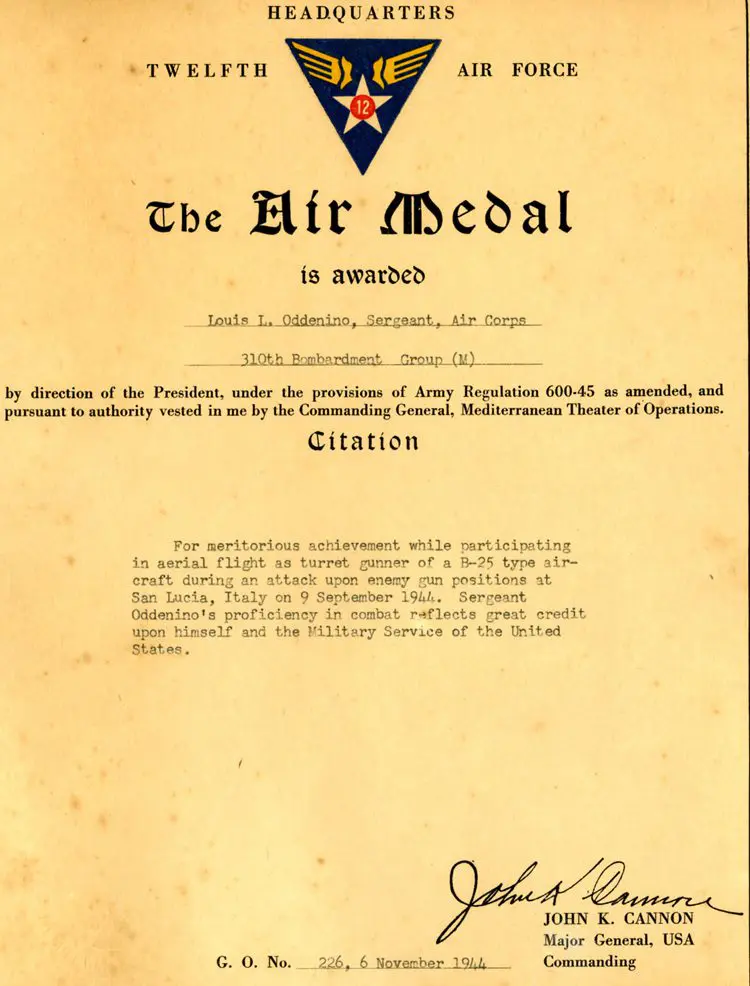
Below are a couple of photos taken of Louis in Europe during the war:
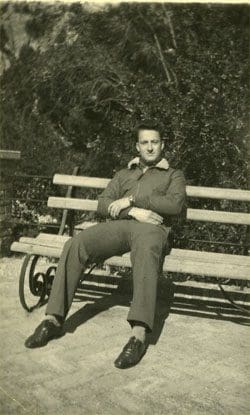
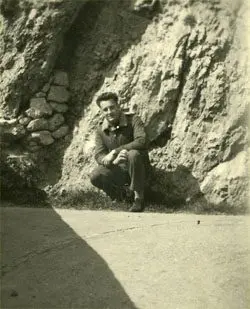
Here is a photo of Louis Lee Oddenino with some of his crew during World War II. Louis is the one on the lower left:
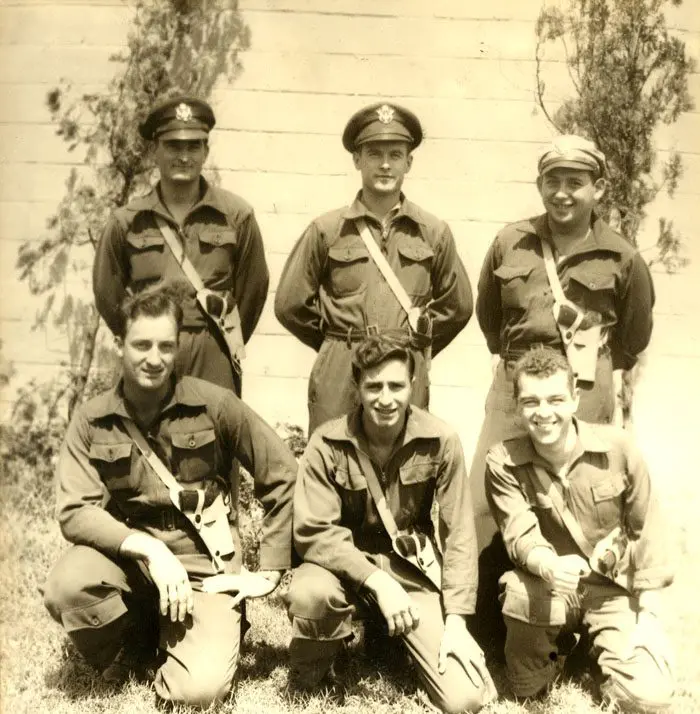
The Germans got more than just bombs from Louis:
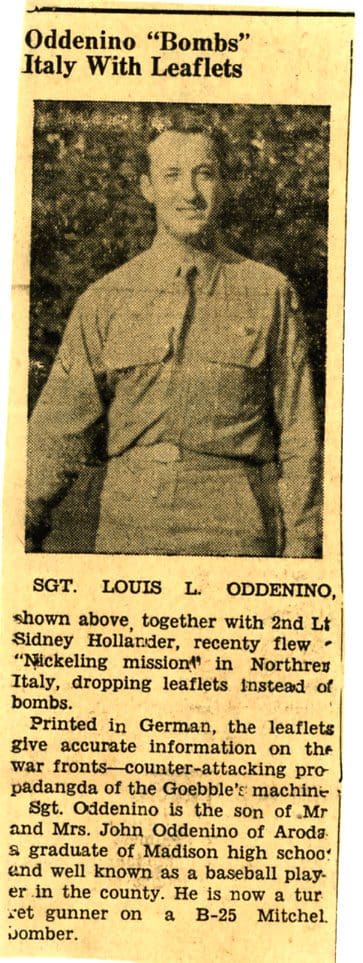
Louis sent Louise photos from Corsica during the war with notes on the back:
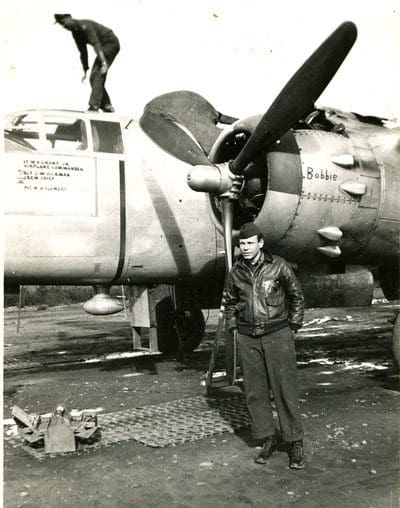
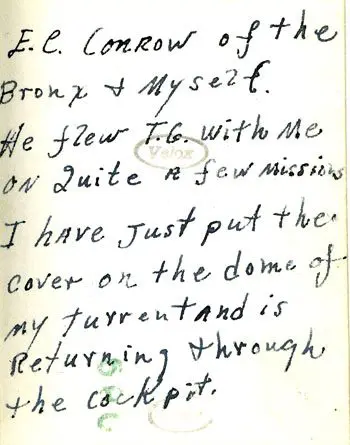
Another photo of Louis and E.C. Conrow of the Bronx in their B-25:
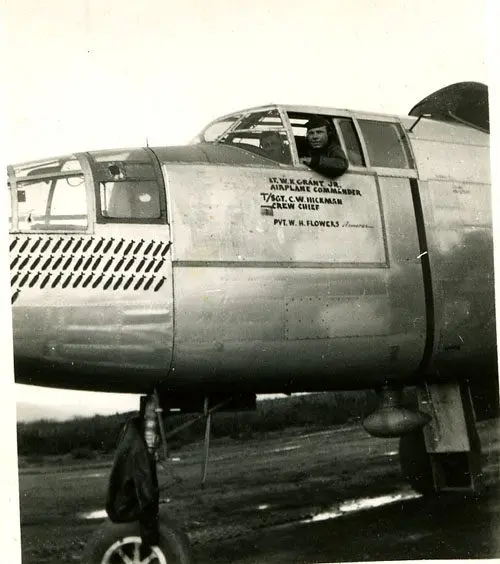
Louis and another crew member, Shafer, with their B-25 and munitions on the island of Corsica in 1945:
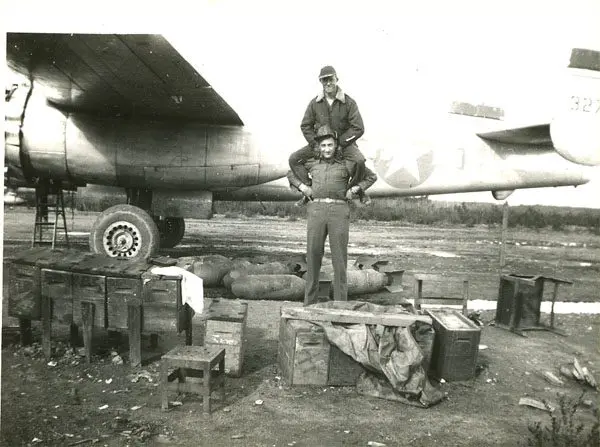
Louis and his B-25 on Corsica, 1945:
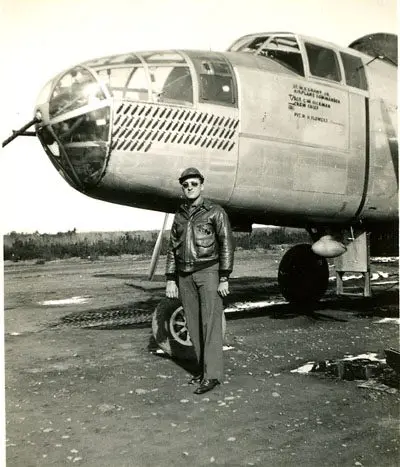
Here is a YouTube video of a Mitchell B-25 bomber in flight: Click here
|
|---|
|
|---|
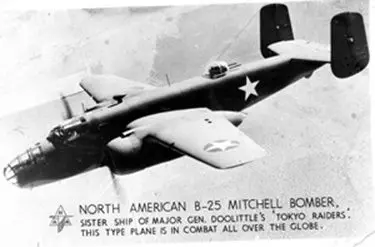

Another turret gunner with Louis was Jim Harris who in a telephone call on November 26, 2001 related that he remembered Theodore Jarman was a pilot with them as well as Lt. General Cannon all who were in the 12th Air Force. :
Jim also shared that it was always scary to go up because you always got hit with flak. He remembers that black smoke meant an 88 millimeter gun of the Germans had been fired and that gray smoke meant a 155 millimeter gun. Mr. Harris remembered that the Mitchell B-25 did allow some evasive action to be taken when being fired at.
He said that the navigator or bombigator would get a feel for the flak and could direct left or right to avoid being hit. He said some of those guys were amazing with their ability to "feel" the flak. Lastly, he shared that some of their missions went all the way up to the Brenner Pass. He too remembered Louis Oddenino as being a "real nice guy."
Louis sent his wife, Louise, a telegram during the war:
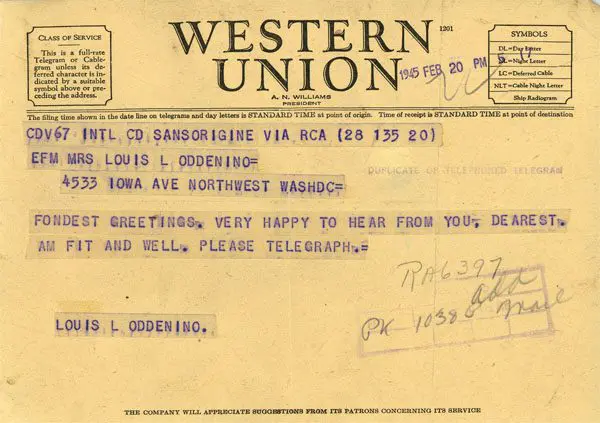
Here is a photo of Louis in front of his tent on the island of Corsica during World War II:
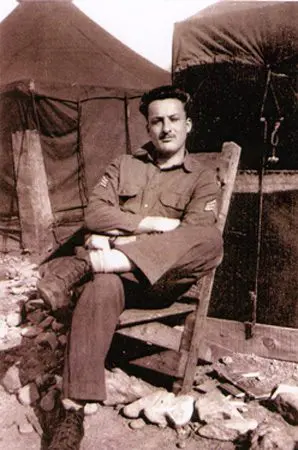
The war efforts of his group were recognized for outstanding achievement
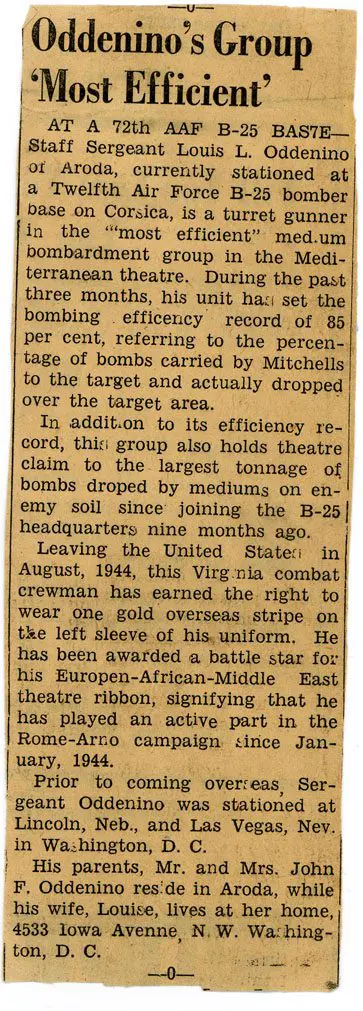
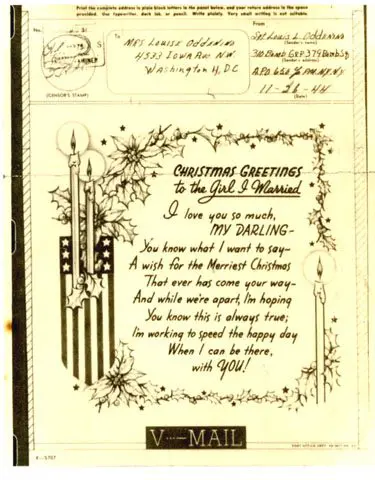
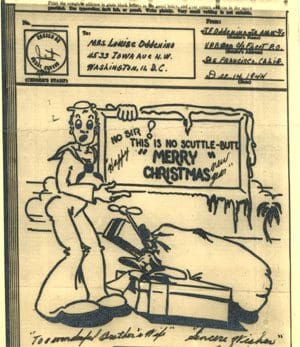
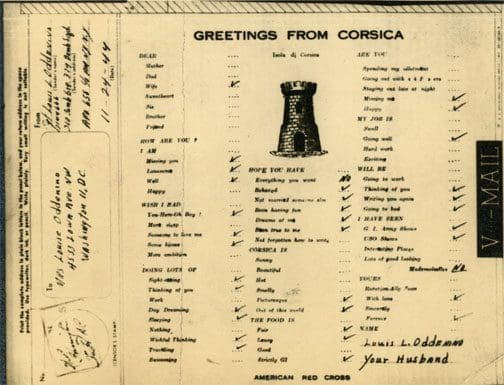

Louise would cut and save newspaper articles about the air war while her husband Louis was overseas:
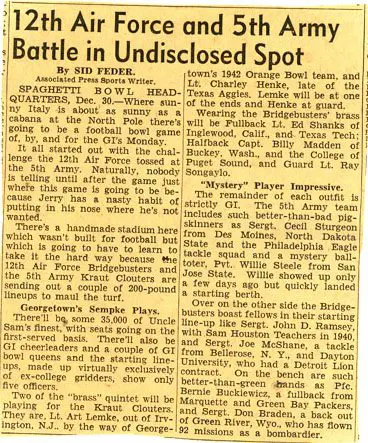
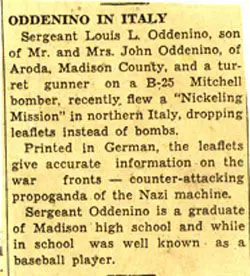
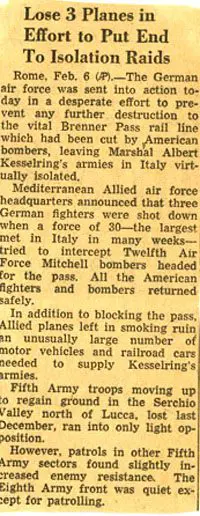
Louis always appreciated packages from home
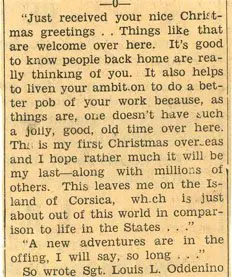
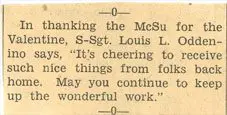
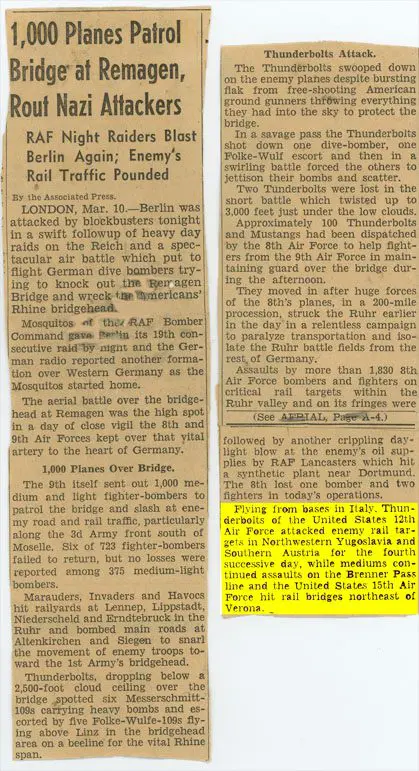
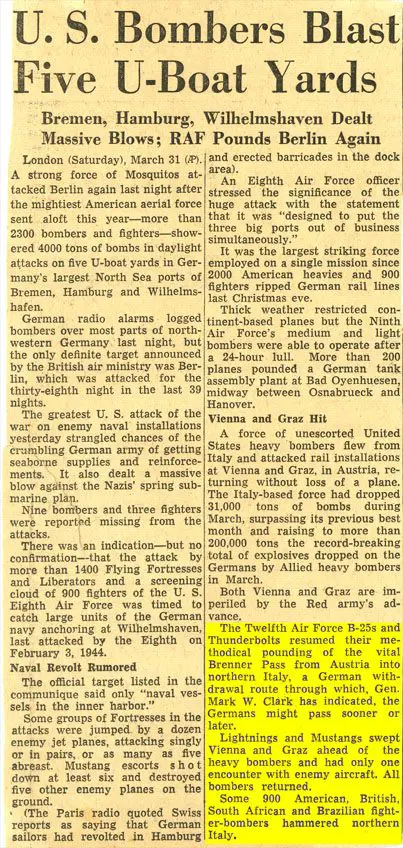
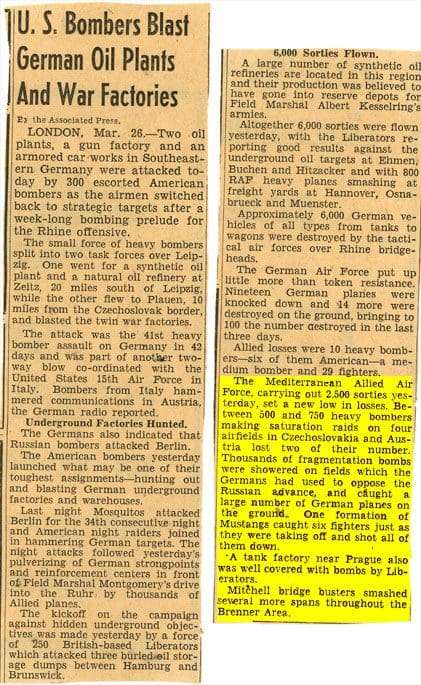
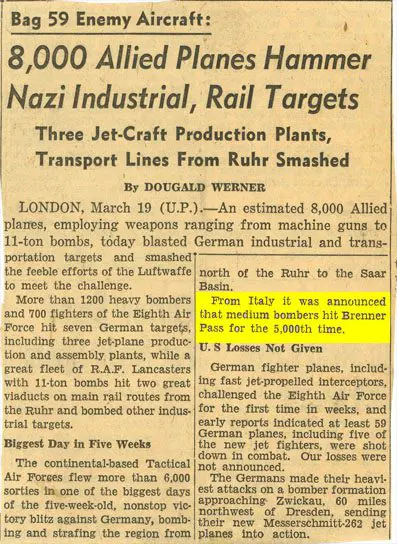
Louis' receipt of his fifth Oak Leaf cluster made the news:
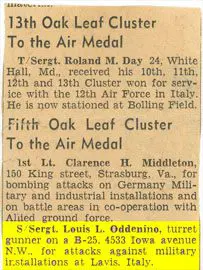
Bronze and Silver oak leaf clusters
An Oak leaf cluster is a common device which is placed on military awards and decorations to denote those who have received more than one bestowal of a particular decoration. The number of oak leaf clusters typically indicates the second and subsequent award of the decoration.
Most military awards use bronze, silver, and gold oak leaf clusters. The higher ranking oak leaf clusters are issued "in lieu" of a lesser number, allowing a large number of award annotations to fit on a single ribbon. For instance, five bronze oak leaf clusters would be denoted by one silver and five silver by one gold.
The United States Military only issues bronze and silver oak leaf clusters. Gold oak leaf clusters were briefly considered as a device for the Air Medal, however this was not adopted by any of the services.
Louis was not the posthumous award winner or this website wouldn't be here:
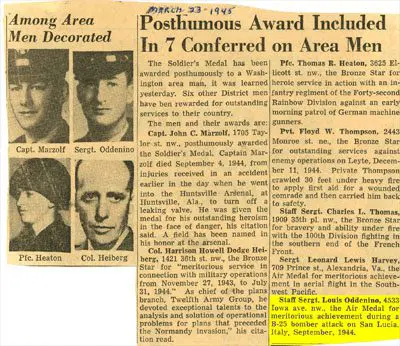
Louis visited various cities in Italy before his tour of duty was up. Photos of Louis in Rome during the war:
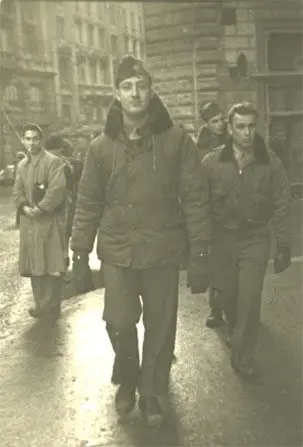
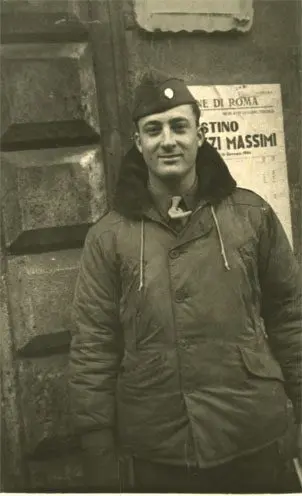
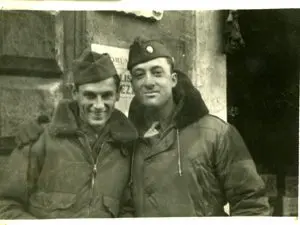
Pictures of St. Peter's in Rome that Louis sent to Louise during the war:
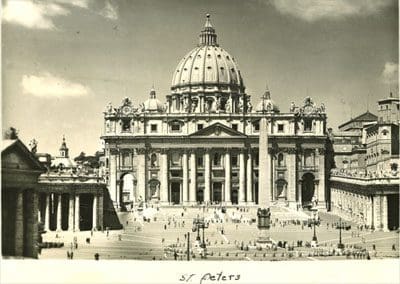
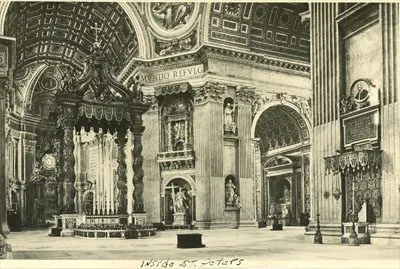
And a brochure on Florence:

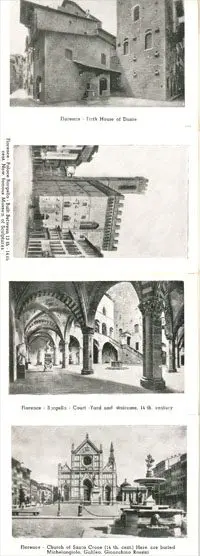

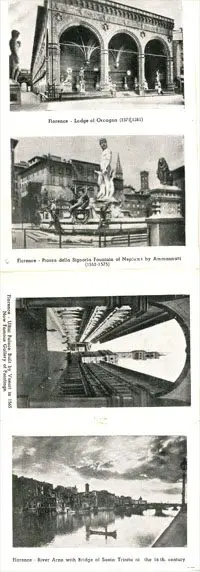
Louis enjoyed a break during the war with a visit to the island of Capri:
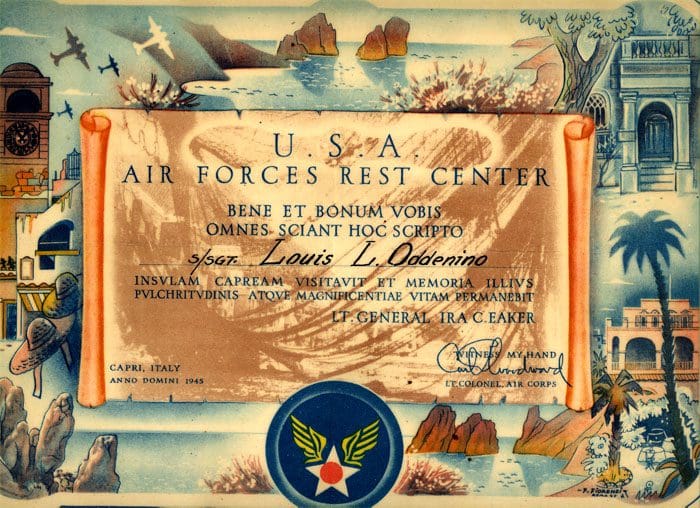
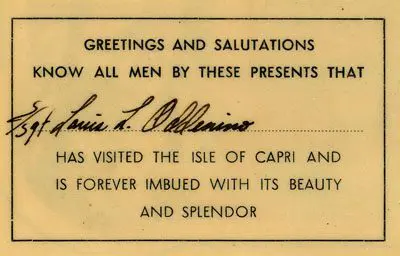
More newspaper articles involving Louis' 12th Air Force action:

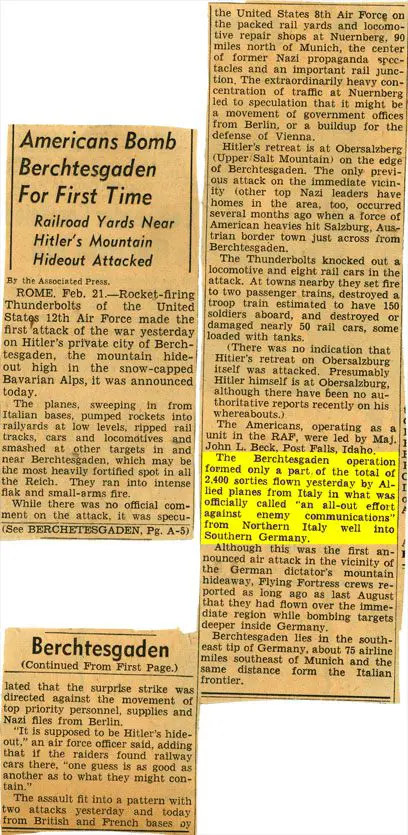

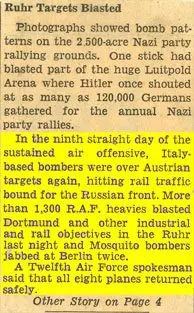
The attention started to shift in the Spring of 1945


As the war in Europe was winding down in the Spring of 1945, the U.S. began redeploying some of its air resources to the Pacific. Medium range Mitchell B-25 squadrons were part of this re-deployment. Germany wasn't a threat anymore.
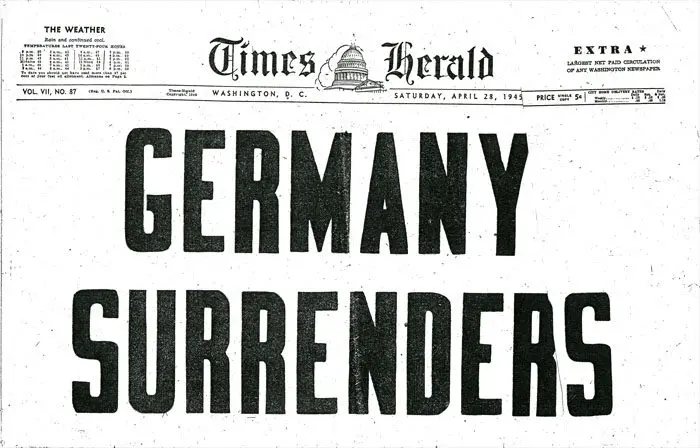
Louis had been advised that his group would be redeployed to the Pacific theatre but first a trip home was in order. Even though he was an airman, Louis and many fellow soldiers were sent home via boat. The long trip through the choppy Atlantic Ocean made many of the soldiers seasick filling up the sick bay.
So many soldiers were sick that the healthy soldiers were given extra KP duty which only caused even more soldiers to get sick. All were happy to get back to the terra firma of the United States of America. Louis arrived home and sent his wife a telegram:

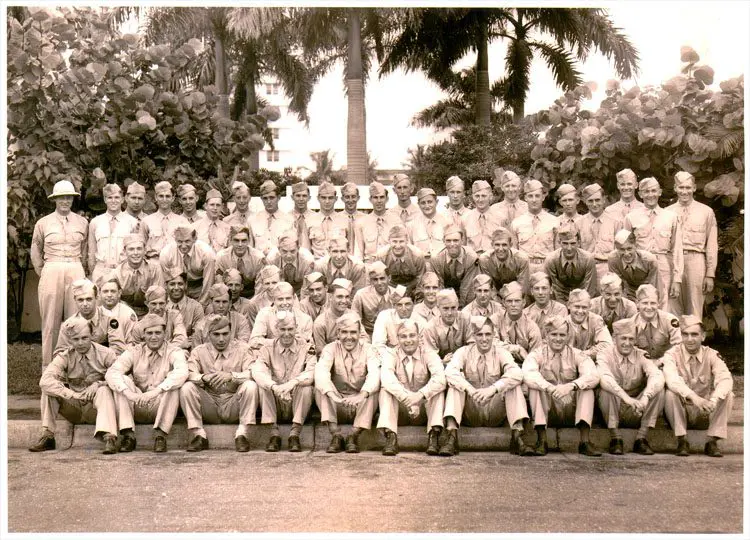
Louis is in the back row, sixth from the right.
Louis and many other returning soldiers were given two weeks of rest and recuperation (R&R) on Miami Beach. The Army had rented out most of the hotels on the beach for the soldiers.
Louise asked for two weeks off from the C&P Telephone Company to spend the two weeks with her husband. They said no. Louise quit and met Louis in Miami where they enjoyed a fabulous reunion.
The happy couple stayed at the Hotel Belmar on the beach in Miami.
After the war the hotel was torn down.
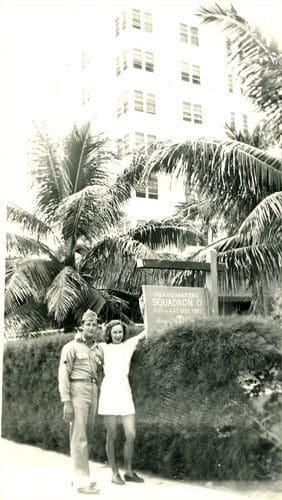
Louise and Louis on Miami Beach May 1945
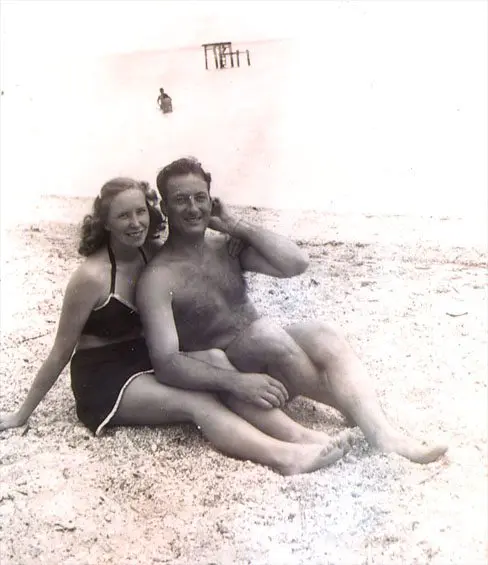
Louis on Miami Beach May 1945
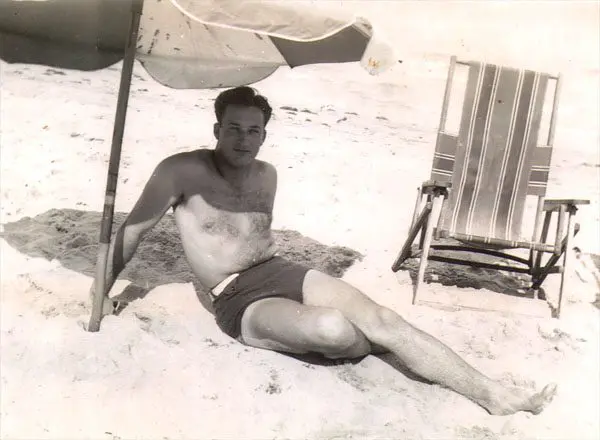
The two Virginians were quite amazed at all the coconuts laying all over the beach. So Louise took a coconut home on the train and here it is - a World War II coconut!

This is a photo of the mess hall in Miami where the happy couple ate all their meals as it was free for Louis and only 35 cents for Louise:
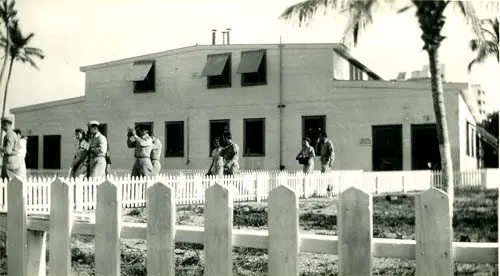
The happy couple enjoyed their first anniversary, June 7, 1945, with Louis soon to be honorably discharged:
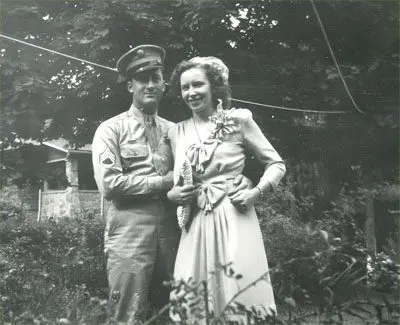
Louis learned that his group was not going to be redeployed to the Pacific theatre and he was honorably discharged on July 6, 1945 at Fort Dix, New Jersey.
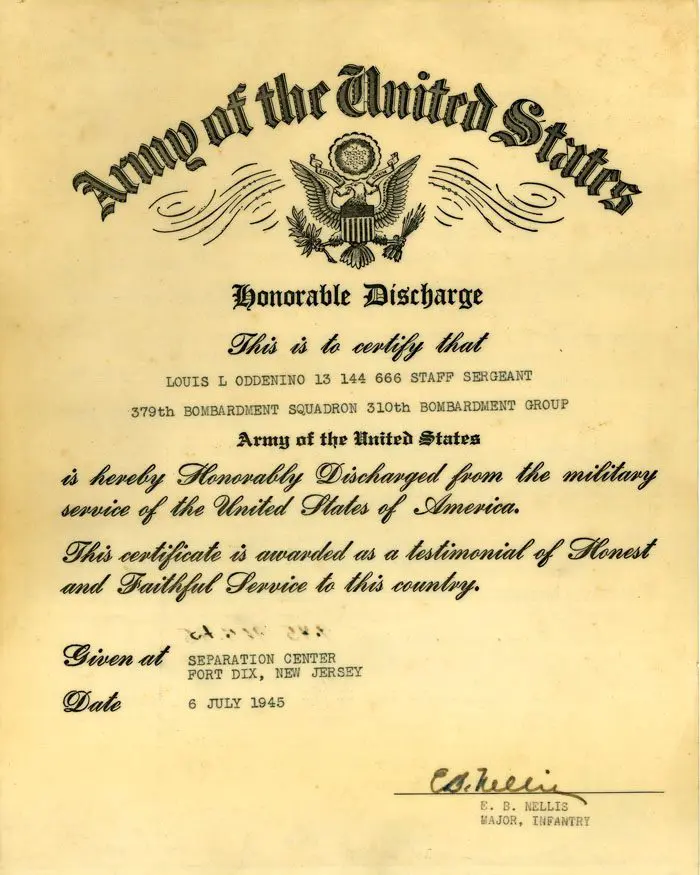
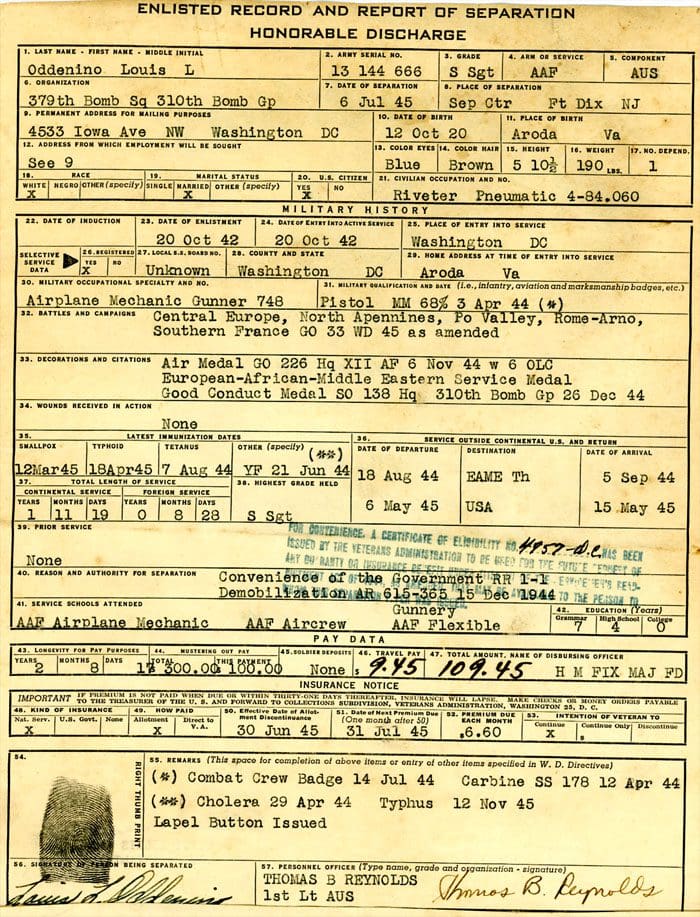
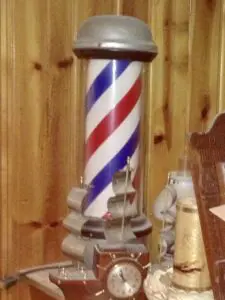 Barber pole from the Arlington Forest Barber Shop of Louis L. Oddenino
Barber pole from the Arlington Forest Barber Shop of Louis L. Oddenino
